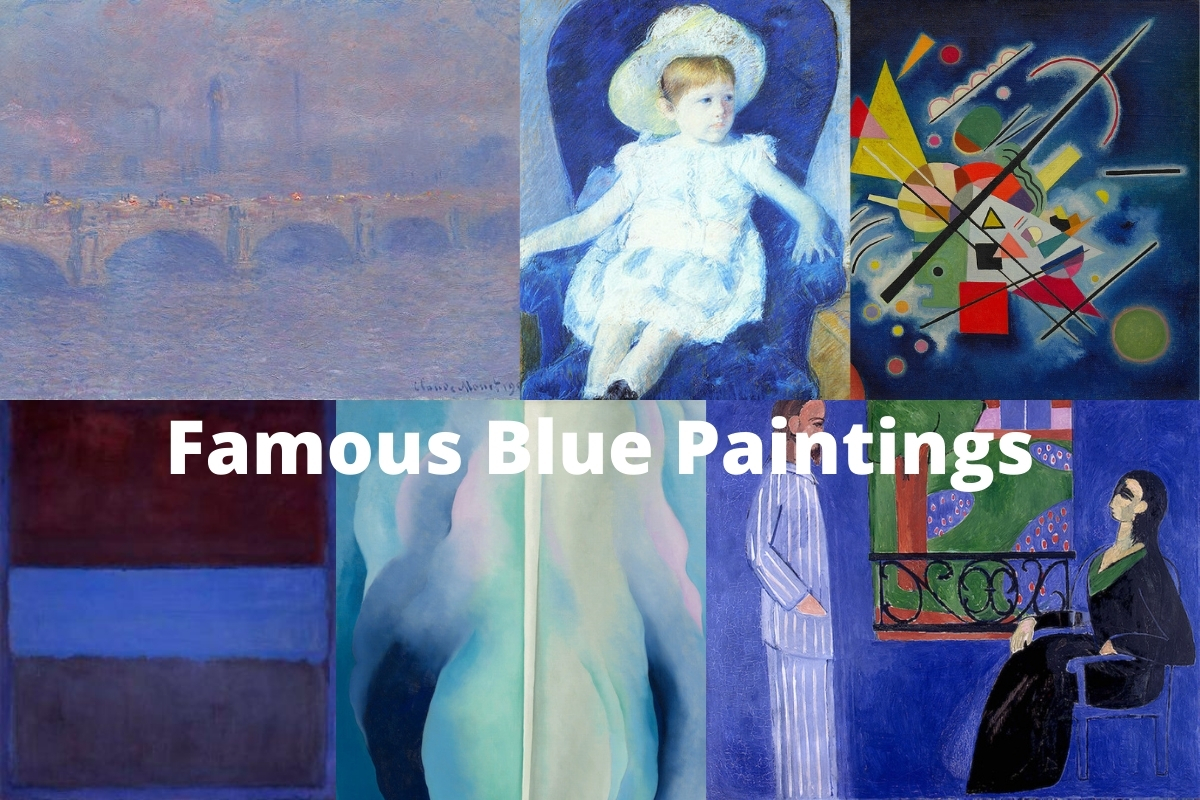The color blue is known universally as one which exhibits a sense of calming and relaxation. It is associated with the stillness of the night, as well as the rhythmic, calming character of the ocean and water itself.
Throughout history, various artists have created iconic works that heavily feature the color blue.
Many of these paintings involve an overall sense of tranquility, but others seem to invoke a sense of relaxation simply through various hues and tonal use of the color blue.
According to art historians and critics, the color blue is known to have a lasting effect on viewers with many notable works incorporating a broad measure of blue coloration in the painting.
In this article, we will explore some of the most famous blue paintings of all time and discuss the various elements that combine to make them among the most memorable works that involve the color blue.
Famous Blue Paintings
1. The Old Guitarist – Pablo Picasso
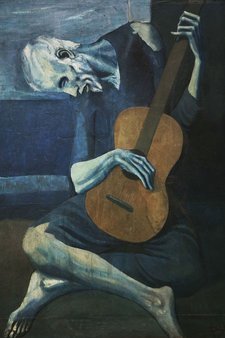
In addition to being viewed as a color that represents calmness and a sense of relaxed state, the color blue is also representative of that which is morose and gloomy.
Such was the case with Pablo Picasso’s famous painting titled The Old Guitarist, which was done in 1903.
Pablo Picasso painted this work shortly after his close friend, Casagemas, committed suicide after a long bout with mental illness and depression.
The artist devoted this particular work and others during this time period to focusing on those who are often downtrodden and heavy-laden with the cares and worries that so often consume humankind.
The painting gives the viewer a very strong sense of misery as the entire work is done in a deep blue hue.
The man in the painting is clutching a guitar, seemingly strumming what is certainly assumed to be a sad tune as his face is fixed with pain and defeat.
Also Read: Sad Paintings
Art critics and historians have noted that Picasso managed to accurately impose the sense of depression that so many go through in this work through the masterful use of the color blue.
2. No. 61 (Rust and Blue) – Mark Rothco
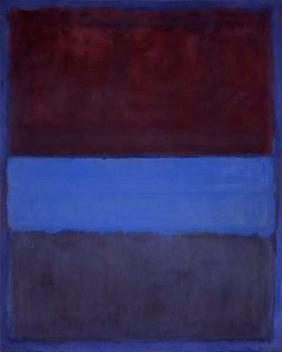
Mark Rothko is a famous artist who was well-known in the American art scene during the mid-20th century. Rothko was born in Russia and moved to the United States during his childhood.
He became highly interested in Abstract painting at an early age and would later become famous for his own paintings which focused on the various tonal consistencies of a variety of colors.
Many of his most famous works include blocks of colors that range in chromatic hues. One of the most memorable paintings Rothko completed is known as No. 61 (Rust and Blue), which is a very simplistic work that features a layered coloring that is overlapped with a deep blue hue.
This painting was done in 1953 and is known as one of the most iconic works from the height of the Abstract art era. The sense of haze and blueish overtone is responsible for this being among the most famous blue paintings ever done.
3. The Starry Night – Vincent Van Gogh
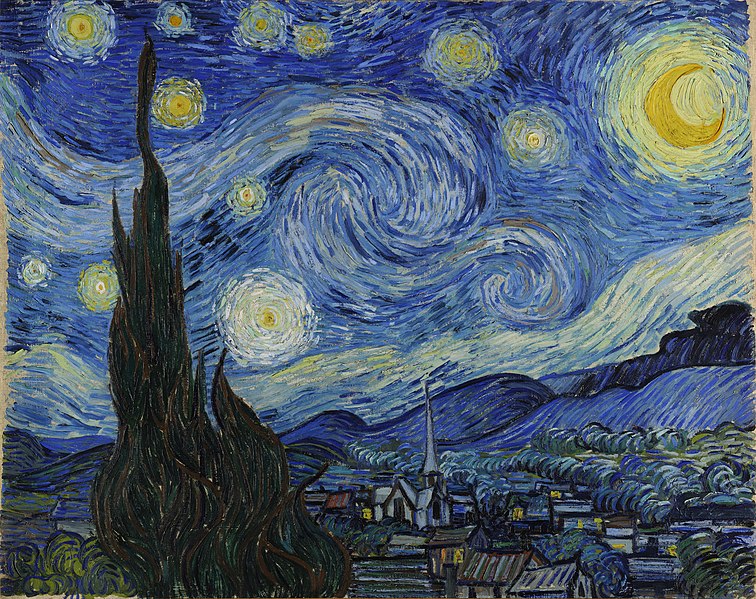
Vincent Van Gogh is highly considered to be among the most famous artists to have ever lived.
Many of his works feature a bold sense of coloration with some of his most notable paintings having an overt sense or characteristic that was indicative of his own mental state that is thought to have been plagued with manic depression.
This painting, The Starry Night, is one of the most iconic works in modern history. Van Gogh famously used swirling brush strokes to create the effect of wind in the night sky mixed with the shining stars over the view he had from his asylum window at Saint-Rémy-de-Provence in southern France.
Also Read: Green Paintings
This 1889 work is dominated by blue tones that indicate a brightly-colored, yet serene night setting.
The painting is considered to be among the most famous ever created by Van Gogh and seems to infuse a sense of manic state that was thought to be the catalyst for much of his Post-Impressionist masterpieces.
4. Waterloo Bridge, Sunlight Effect – Claude Monet
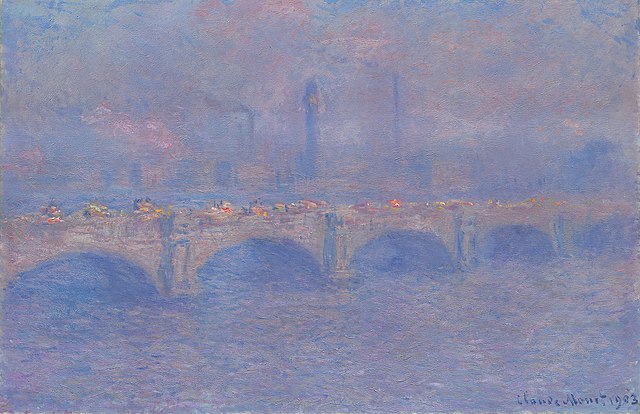
Claude Monet was a French painter that is among the most famous from the Impressionist movement that took place during the late 190th century.
His work titled Waterloo Bridge, Sunlight Effect was completed in 1903 and features vastly different hues of blue that portray the sky and the water, as well as the distant view that is faintly visible.
According to many art historians and critics, Monet used the color blue to mimic and represent the effects of the heavy fog that so often blankets London and the area near the Thames.
Monet is known to have commented “London wouldn’t be a beautiful city. It’s the fog that gives it its magnificent breadth.”
Also Read: Famous French Impressionists
This particular work features an array of blue coloration that seems to make the bridge itself and the cityscape in the background barely visible—much like one would expect to see in the actual London fog.
5. The Conversation – Henri Matisse
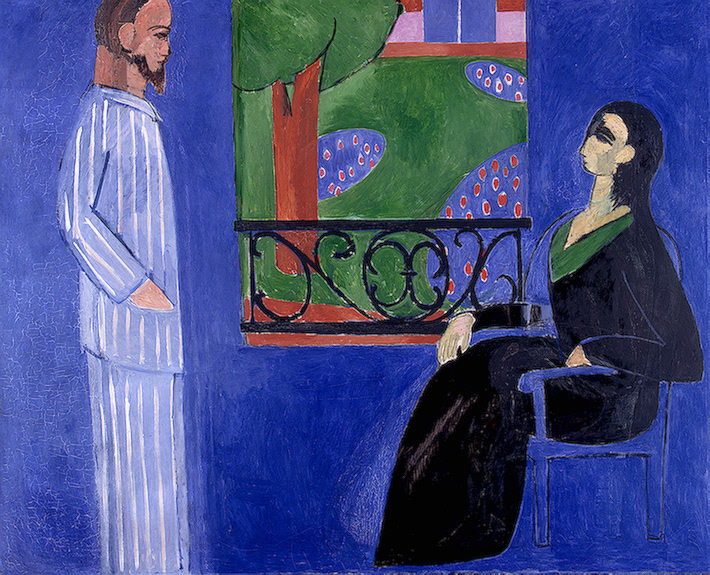
Henri Matisse was known for his use of bold, intense colors that typically dominated his paintings.
While most of his works feature multiple colors that have a strong effect on the viewer, few feature one single color in a more broad sense than his painting titled The Conversation, which was done in 1912.
Also Read: Famous Colorful Paintings
The painting famously includes Matisse himself and his wife, Amelie, who is seated on the right side of the canvas. The heavy blue coloration of the work seems to draw the viewer into the portrait itself, involving them in ‘the conversation’ as if they were a part of it.
Also Read: Henri Matisse Most Famous Paintings
Amelie is seen as wearing an elegant gown while Matisse is dressed in pajamas, which many art historians say was his choice of dress while working in his own studio. The painting involves some of the most intense use of the color blue as it is incorporated throughout the canvas.
6. Abstraction Blue – Georgia O’Keeffe
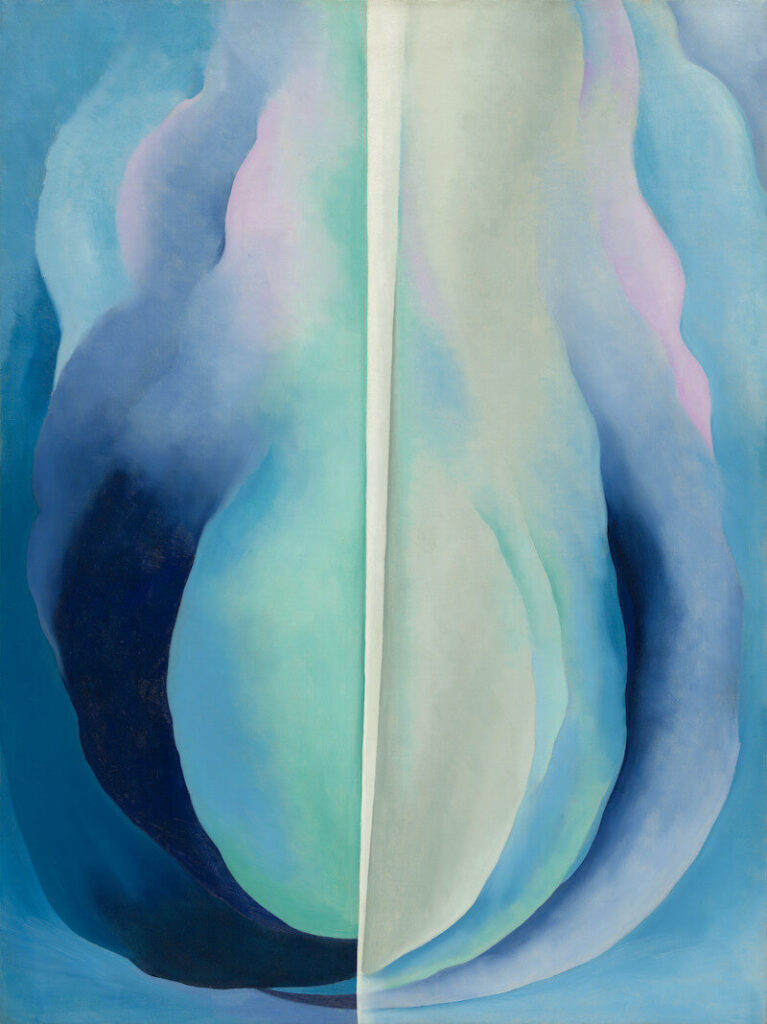
Few artists are known to have delved as deeply into the subject of nature as Georgia O’Keeffe.
She is famous for painting various works that focus on a specific color, many of which involve flowers or natural settings that seem to highlight the particular coloration.
Her 1927 work titled Abstraction Blue is known as one of the most iconic Abstract works from the early 20th century.
This particular painting features different layers that seem to represent a vast range of different hues that are all blue in some sense.
The painting is believed to be representative of a flower, which was one of the most common subjects of O’Keeffe, especially during her later career.
7. Blue Painting 1924 – Vassily Kandinsky
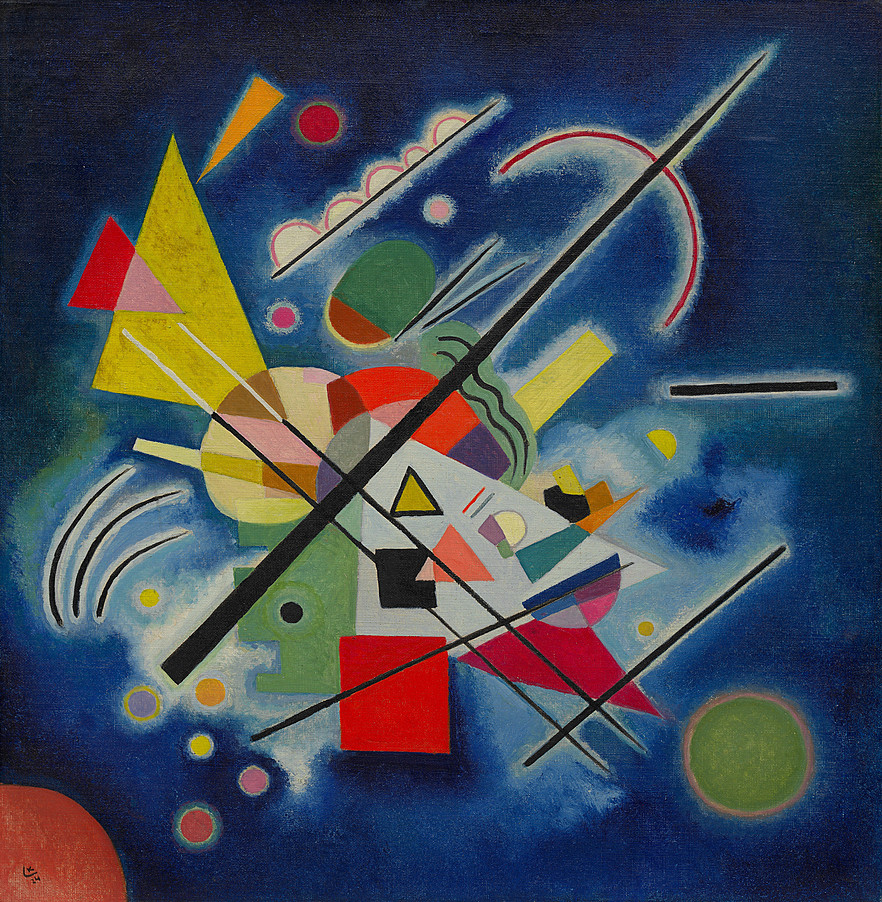
Vassily Kandinsky is among the most famous Abstract artists in history. Many of his most famous works involve a wide range of shapes, linear forms, and colors that all combine to form a truly unique sense of artistic expression.
Kandinsky’s work titled Blue Painting 1924 is one of the most famous blue paintings due to the artist’s heavy use of the color throughout the entirety of the canvas.
The edges feature a very dark, deep blue which grows brighter toward the center. This works to highlight the interior portion of the painting and draw the viewer’s attention toward the center of the work itself.
8. Saint Tropez, Storm – Paul Signac
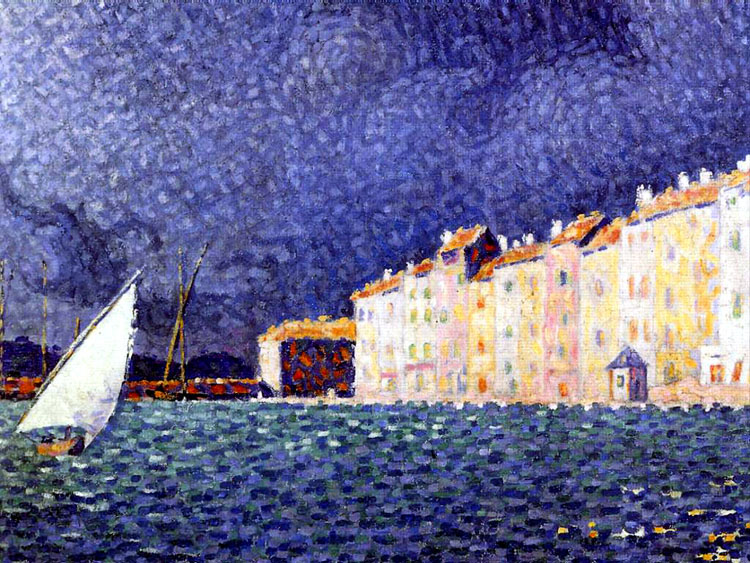
Paul Signac was known as a painter of works that mostly consisted of an art form known as stippling, which features a series of methodical, deliberate dots that make up various figures and subjects of a work.
The art form is seen as a clear departure from the common brushstroke and a sense of attention to detail on behalf of the artist.
Signac is best known for one work in particular, which is titled Saint Tropez, Storm. This painting was done in 1895 during the height of the era when artists were exploring stippling.
Also Read: French Paintings
Signac managed to beautifully portray an oncoming storm that is set to make landfall on a coastal city—the strong wind being indicated by the sailboat being driven along toward the shore.
This painting is filled with varying tones of blue from the bright coloration of the water to the dark, heavy blue tones of the rain-filled clouds in the sky.
9. Woman with Mango – Paul Gauguin
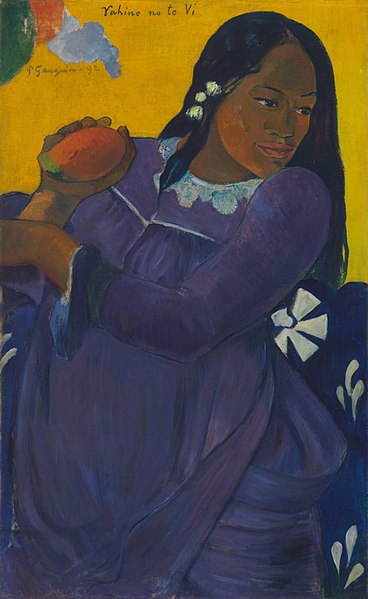
Paul Gauguin lived a rather unusual life and was not known as a famous painter until after his death in 1903. During his career, he painted many works that involved the use of dark, heavy tones that invoked a sense of boldness and vibrancy in many of the subjects.
Gauguin’s painting titled Woman with Mango was done in 1892 and features a young woman that the artist is said to have married when she was merely 13 years old.
The painting features a deep blue coloration that appears to be nearly purple at first glance.
This particular work is from dozens that Gauguin produced during his travels to the island of Tahiti. This work involves a masterful use of blue coloration to portray the girl’s dress as it flows in various directions.
10. Elsie In A Blue Chair – Mary Cassatt
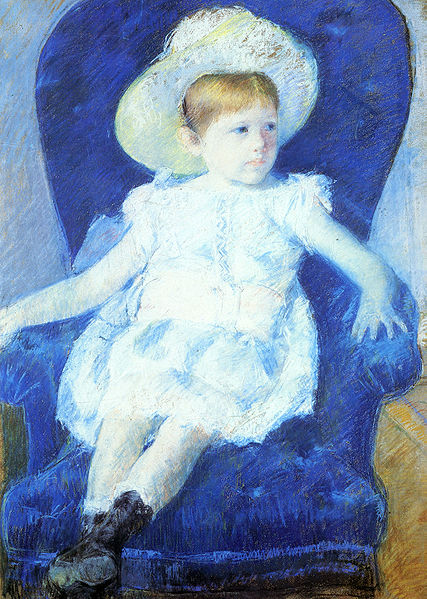
Mary Cassatt is one of the most celebrated artists from the Impressionist era that took place in the late 19th and early 20th centuries.
Her works feature a number of social settings and beautiful portraits that focus on various individuals. One of her most notable paintings is titled Elsie In A Blue Chair.
Created in 1880, this painting features a wide range of blue colors that range from bold, royal blues to brighter colorations that emphasize the sun’s brightness in the subject, which is a young girl seated on a blue chair.
The girls white dress is highlighted with blue tones while her vibrant blue eyes also combine to make this one of the most famous blue paintings ever done.

